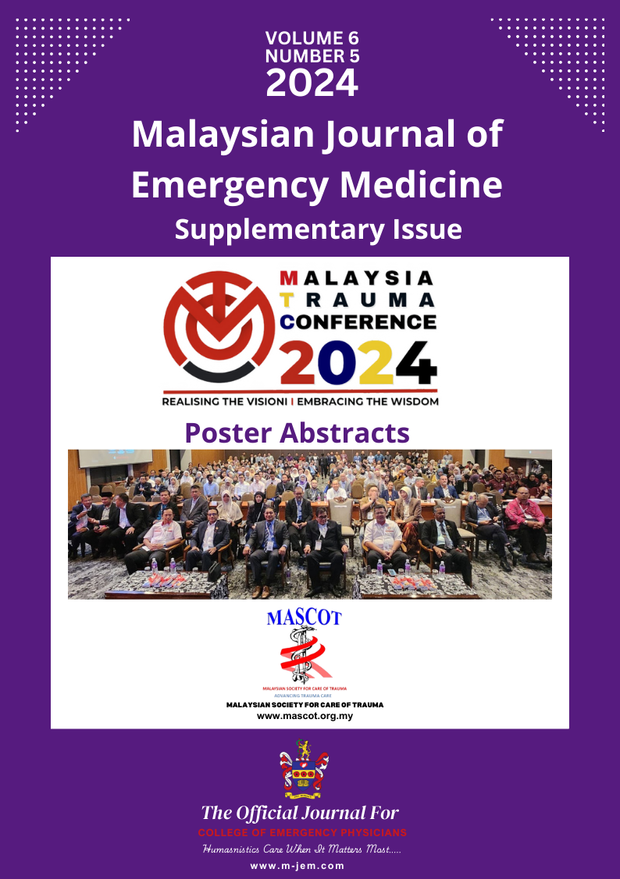A12 The Eerie Ears: A Case Of Bilateral Ear Amputation
Main Article Content
Abstract
INTRODUCTION
Trauma related injuries are vast and cases of bilateral ears avulsion were relatively under-reported or rare. Most of the cases reported were unilateral ear injuries and the successful surgical interventions. This is a case report of bilateral ears avulsion with inevitable amputation.
CASE REPORT
A 40-year-old healthy man, presented after a road traffic accident with bilateral ear avulsion and mild head injury. Initial management included compression bandaging due to severe ear distortion, with no cerebrospinal fluid leakage noted. CT imaging revealed right parietal subarachnoid hemorrhage and thin occipital subdural hemorrhage, without skull or cervical spine fractures. His Glasgow Coma Scale remained stable. Surgery by the ORL team deemed both ears unsuitable for reconstruction, thus removed. He was admitted for observation and further evaluation.
DISCUSSION
Immediate hemorrhage control in traumatic ear amputations is critical to prevent hypovolemic shock and death. Multiple techniques are available and compression dressing being the common initial measure, hemostatic suturing and hemostatic dressing application would be the other options. Tranexamic acid (TXA) administration had been proven to reduce the mortality in trauma patients. Salvage of amputated ears focuses on functional outcomes and quality of life. Successful reattachment, reported with rates of 50%-80%, depends on injury severity, time since amputation, and the surgical expertise. Al-Ali et al. had developed an algorithm for surgical management of traumatic auricular avulsion injuries in the acute settings. In this case, primary closure was opted as the amputated segment was missing and microsurgery was not available.
CONCLUSION
In conclusion, the management of traumatic bilateral ear amputations requires a multifaceted approach, prioritizing rapid hemorrhage control and timely surgical intervention if available for ear salvage
Metrics
Article Details

This work is licensed under a Creative Commons Attribution-NonCommercial 4.0 International License.

